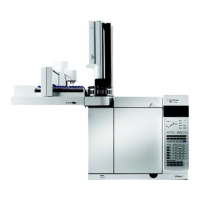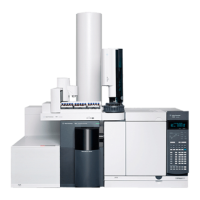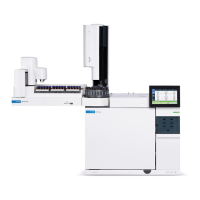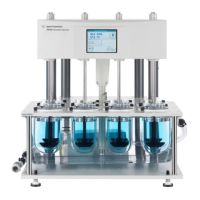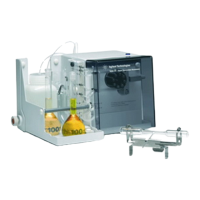182 Advanced Operation Manual
5 Detectors
About the uECD
The micro- cell detector (uECD) contains a cell plated with
63
Ni, a radioactive isotope. The
63
Ni releases β particles that
collide with carrier gas molecules to produce low- energy
electrons—each β particle produces approximately 100
electrons. The free electrons produce a small current—called
the reference or standing current—that is collected and
measured in a pulsed circuit.
When a sample component molecule comes into contact with
the free electrons, the electrons may be captured by the
sample molecules to create negatively charged ions. The
voltage across the cell electrodes is pulsed to collect the
remaining free electrons while the heavier ions are relatively
unaffected and swept out the vent with the carrier gas flow.
Cell current is measured and compared to a reference
current. The pulse rate is adjusted to maintain a constant
cell current. The more uncaptured electrons, the lower the
pulse frequency required to match the reference current.
When a component that captures electrons passes through
the cell, the pulse rate rises. This pulse rate is converted to
a voltage and recorded.
uECD safety and regulatory information
The
63
Ni isotope
The radioactive isotope used in the cell is
63
Ni. It is plated
onto the inner surface of the cell body and is solid at
temperatures used in chromatography. Some other properties
are listed below.
Tabl e 46 Properties of
63
Ni
Property Value
Half–life: 101.1 years
Emission: 65.87 keV max., beta radiation
Melting point: 1453 °C
Dimensions of the active part of the
uECD:
Inside diameter: 6 mm
Height: 4.2 mm
Total activity (uECD cell): 555 MBq (15 millicuries) maximum

